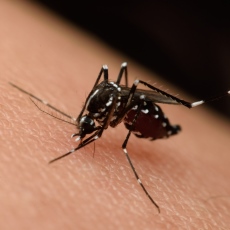West Nile Virus

Learn More
See, Play and Learn
- No links available
Research
Resources
For You
Summary
West Nile virus (WNV) is an infectious disease that first appeared in the United States in 1999. Infected mosquitoes spread the virus that causes it. People who get WNV usually have no symptoms or mild symptoms. The symptoms include a fever, headache, body aches, skin rash, and swollen lymph glands. They can last a few days to several weeks, and usually go away on their own.
If West Nile virus enters the brain, however, it can be life-threatening. It may cause inflammation of the brain, called encephalitis, or inflammation of the tissue that surrounds the brain and spinal cord, called meningitis. A physical exam, medical history, and laboratory tests can diagnose it.
Older people and those with weakened immune systems are most at risk. There are no specific vaccines or treatments for human WNV disease. The best way to avoid WNV is to prevent mosquito bites:
- Use insect repellent
- Get rid of mosquito breeding sites by emptying standing water from flower pots, buckets or barrels
- Stay indoors between dusk and dawn, when mosquitoes are most active
- Use screens on windows to keep mosquitoes out
NIH: National Institute of Allergy and Infectious Diseases
Symptoms
- West Nile Virus: Symptoms and Treatment (Centers for Disease Control and Prevention) Also in Spanish
Prevention and Risk Factors
- FAQ: Insect Repellent Use and Safety (Centers for Disease Control and Prevention)
- Find the Repellent that is Right for You (Environmental Protection Agency)
- West Nile Virus: Prevention and Control (Centers for Disease Control and Prevention) Also in Spanish
Related Issues
- FAQ: Blood Donation and Organ Transplant (Centers for Disease Control and Prevention)
- FAQ: West Nile Virus and Dead Birds (Centers for Disease Control and Prevention)
Journal Articles References and abstracts from MEDLINE/PubMed (National Library of Medicine)
Children
- What's West Nile Virus? (Nemours Foundation) Also in Spanish
Teenagers
- West Nile Virus (Nemours Foundation) Also in Spanish
Patient Handouts
- West Nile virus (Medical Encyclopedia) Also in Spanish
